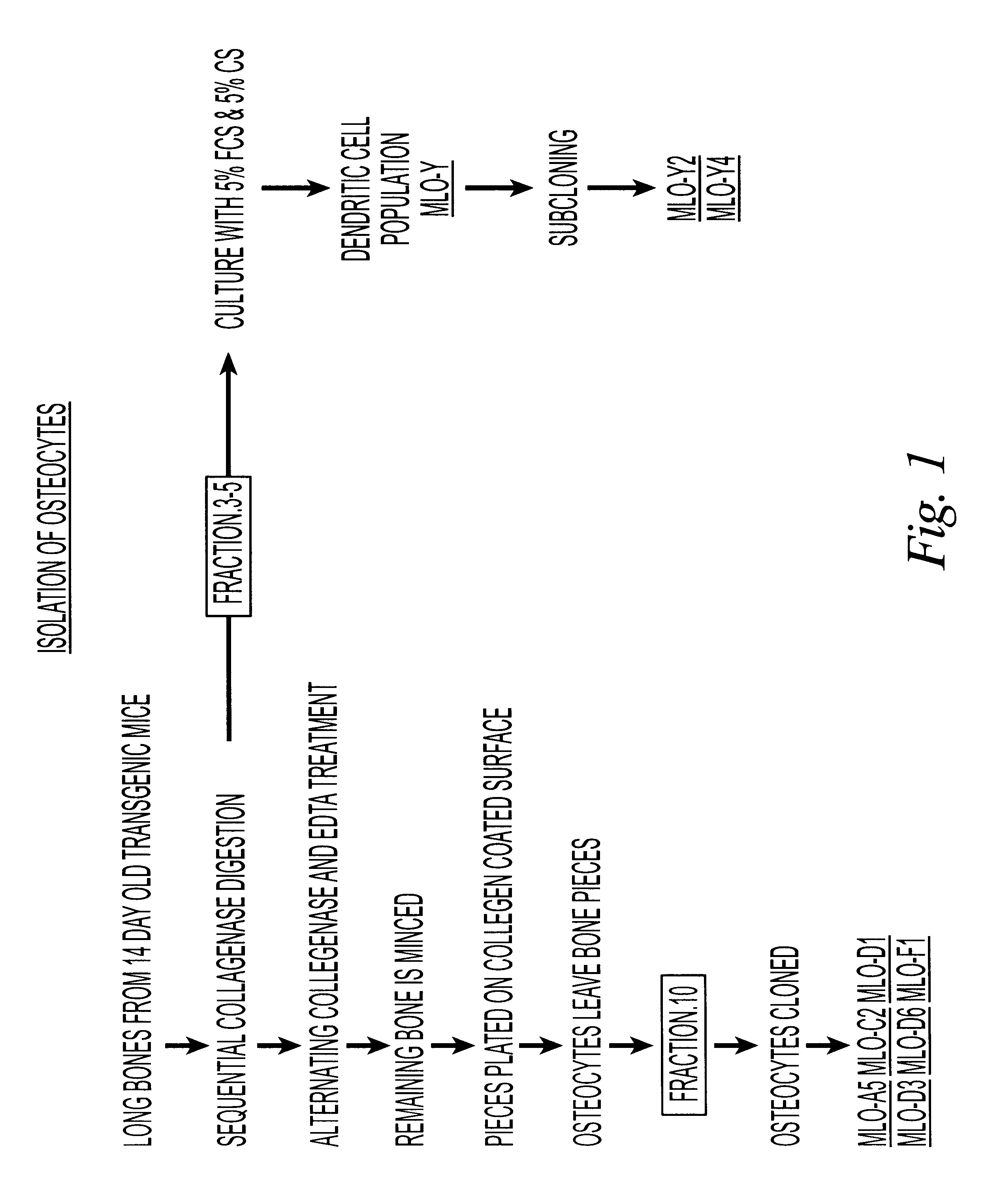Osteocyte cell lines
a technology of osteocytes and cell lines, applied in the field of osteocyte cell lines, can solve the problems of difficult culture study, poor understanding of osteocyte properties and functions, and inability to obtain primary cells in relatively low numbers, and achieve high levels of osteocalcin
- Summary
- Abstract
- Description
- Claims
- Application Information
AI Technical Summary
Benefits of technology
Problems solved by technology
Method used
Image
Examples
Embodiment Construction
5.1 Establishment of Transgenic Mice
Construction of the osteocalcin promoter driven T-antigen transgene and establishment of transgenic mice have been described previously (Chen et al., 1995). In short: A 2.6 Kb DNA fragment containing the rat osteocalcin gene promoter region from -2600 to +30 was ligated upstream of the SV40 early region which is containing the protein-coding region of large T- and small T-antigens. DNA was microinjected into the pronuclei of fertilized one-cell mouse embryos. The F2 embryos were derived from matings of CB6F1(C57Bl / 6.times.Balb / c) males and females obtained from Harlan Sprague-Dawley, Inc. (Indianapolis, Ind., U.S.A.). The injected embryos were reimplanted into B6D2F1(C57Bl / 6.times.DBA2) pseudopregnant females. The presence of the transgene in the resulting pups was determined by Southern blot analysis of genomic DNA. Founder transgenic mice were bred to nontransgenic CB6F1 mice to establish the lines of mice.
5.2 Definitions
Osteocyte: stellate shap...
PUM
| Property | Measurement | Unit |
|---|---|---|
| Fraction | aaaaa | aaaaa |
Abstract
Description
Claims
Application Information
 Login to View More
Login to View More - R&D
- Intellectual Property
- Life Sciences
- Materials
- Tech Scout
- Unparalleled Data Quality
- Higher Quality Content
- 60% Fewer Hallucinations
Browse by: Latest US Patents, China's latest patents, Technical Efficacy Thesaurus, Application Domain, Technology Topic, Popular Technical Reports.
© 2025 PatSnap. All rights reserved.Legal|Privacy policy|Modern Slavery Act Transparency Statement|Sitemap|About US| Contact US: help@patsnap.com

